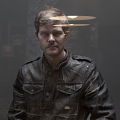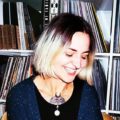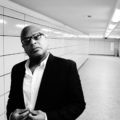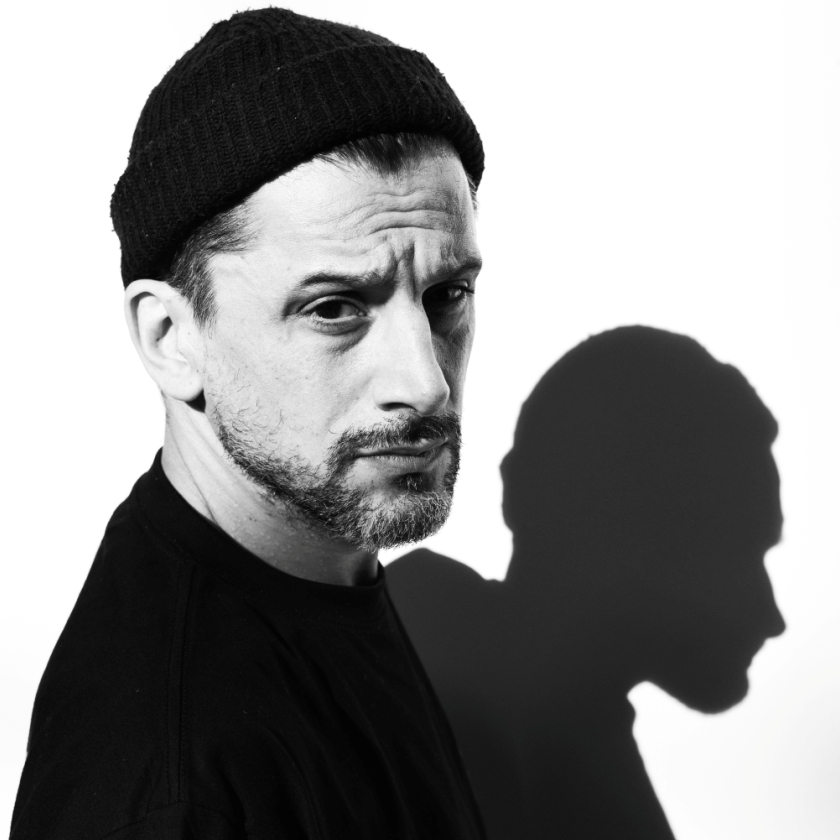
We talk to one of Techno’s most prolific producers and unsung heroes
From humble beginnings behind the mixing desk as a YTS trainee in a London recording studio, to conquering the world of Electronic Music as “The Advent” – we talk to one of Techno’s most prolific producers and unsung heroes Cisco Ferreira.
London based Cisco Ferreira aka ‘The Advent’ is one of those people that can be described as many things: a musician, pioneer, sound designer, steady force and most definitely a ‘persistent m*therf*cker’. Most well known for his interpretation of full throttle Techno – he’s consistently rocked dance floors the world over since the mid 90s. His story is very much one of humble beginnings, having found his feet and faith in music after discovering the sound of Acid House in the clubs he frequented during the 80s as a youngster.
Originally from Boa Nova (Madeira), a small rocky outcrop in the Atlantic Ocean, after the Portuguese Revolution of 25th April in 1974, like many – his family decided their future lay elsewhere and moved to London. A far cry from sunny island life and being surrounded by the ocean, an endless horizon, ships setting sail and amazing sun sets. Cisco soon found himself having to get used to the cold and grey climes of the UK where the kids on the street were pretty rude. Having to adjust pretty quickly, it was only later on in his teens that the world of Hip Hop culture, Graffiti and Breakdancing gave him a new sense of place. With the boom of Acid House culture that followed not long after and regular visits to the now legendary dance floors of Rage, Click Street, Wag Club and Lost. A career in making music called, and three decades later, he’s still going strong having stayed completely true to his roots.
We reached out to find out more about his background and experiences in shaping sounds over the last 30 years:
What sort of music were you brought up on at home?
“At home, we mainly listened mainly Portuguese (Madeira) Folk Music which funnily enough has a 4/4 beat & rhythm to it. I found it pretty annoying after a while so started seeking out more modern music. By the time I started school, I found myself listening to so much music: Dub, Reggae, Hip Hop, Electro Funk. I even got to learn to play the Steel Pan and Xylophone.”
How did you get first get introduced to Electronic Music and what were your experiences of Acid House?
“Being in and around London, there was a lot of stuff going on. I guess it would have been around 87/88 that I discovered the sounds of Colin Favour – one of the best DJs in those early days. He was the first person to really push House and Techno music whilst playing at Camden Palace back then. Before you knew it, I started going out regularly to infamous nights like Rage, Lost, Clink Street and Wag Club – not forgetting the original ‘Tribal Gathering’ and the rise of warehouse parties between 87–89.”
Were you aware at that point of what was bubbling under?
“After the whole rave and warehouse explosion in 87-88, the music just got more and more interesting. Artists were starting to grow in stature and create some real milestone music. You only need to look at how much attention the likes of Altern8, LFO, The Prodigy, 808 State and of course “Guy Called Gerald” were starting to get. The release of “Voodoo Ray” in 88 was BIG in so many ways, it was the release of the first proper UK Club hit that we could call UK House/Techno. This period was the starting point for a lot of us.”
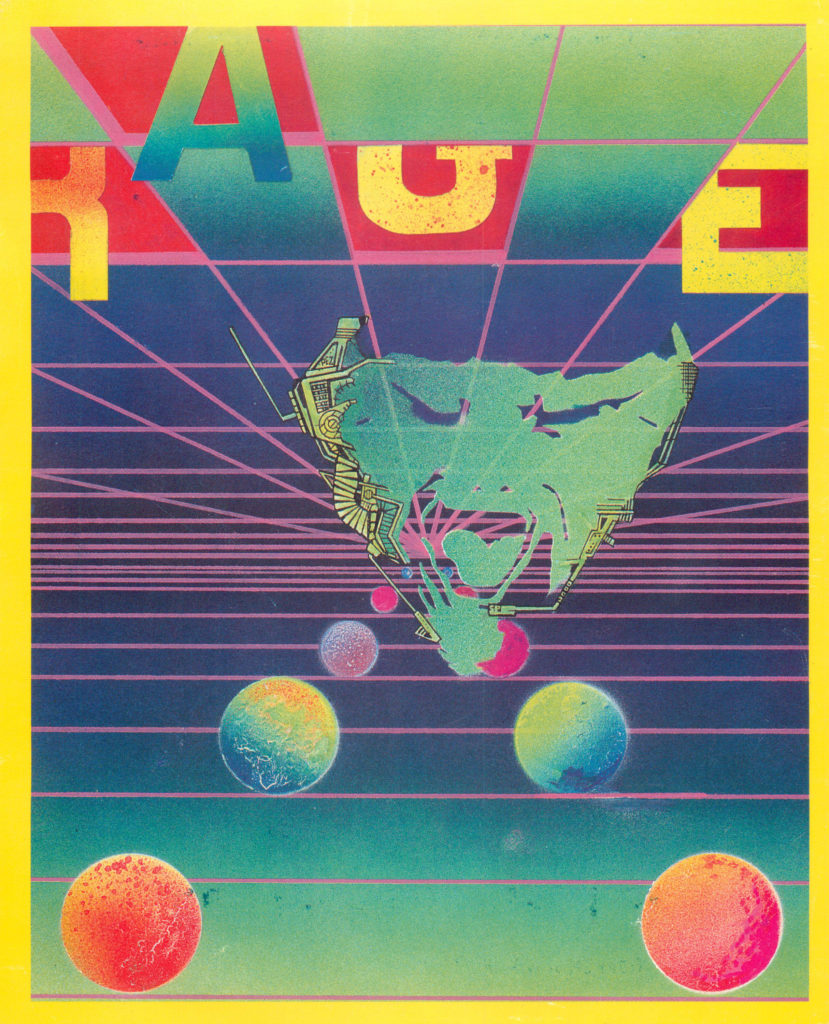
Tell us about your journey from college to becoming an assistant sound-engineer:
“After leaving school, I studied sound engineering at Paddington College (now City of Westminster College), a whole bunch of us who were friends from the course all started looking for work experience. One of my friends landed a job working with Bananarama on tour and another Simon ended up at the Exchange mastering house as a YTS trainee where he still works. I decided to focus on the production side of the music”
Who gave your first break?
“It was a combination of people really, Jim Hawkins at Zolou Studios and later John Payne (the singer from the rock group Asia) and Matt Dangerfield who founded ‘The Wall’ studios.”
Which bands did you get to record?
“I was very fortunate to work with some true music legends. Robert Plant (Led Zepplin), John Lydon (Sex Pistols) the Original Techno-Punk nutter, I remember him telling me about working with Bam (Afrika Bambaataa) when they did those Time Zone tracks. A great guy and very very funny person, he showed up at the studio in a full Russian officer uniform on one of the P.I.L. Sessions: a true living legend! I also got to work with Maxi Priest, Sly Dunbar (best Akai MP60 drummer on the planet), Bonnie Tyler (Total Eclipse of the Heart) when they did some mix downs and Loose Ends – the first UK Soul band to get a #1 in the USA with ‘Hang’n on a string’ and ‘Slow Down’. One of my early sessions as a tea boy was with Nelly Hooper (Wild Bunch), I remember 3D from Massive Attack rocking up in his Goose Bomber jacket, they all had that Hip Hop swagger.”
How important was something like YTS?
“So, so important! It was one of the best things they introduced back then at colleges, to think they were paying me to study. They covered all my travel and food expenses. It’s genuinely sad the Government took this away from young people. Even one of the best footballers England ever produced – David Beckham – did his football training under the Youth Training Scheme. You really do wonder what possibilities the kids of today could have. I was one of the last lucky ones from West London in many respects. Looking back now, it was an amazing time to be around Portobello Road, Tabernacle and Notting Hill – there was so much talent buzzing around in that area.”
In 1987 you then got a job with London based “Jack Trax”, how did you meet Damon D’Cruz & Robin King?
“After a year as an assistant sound engineer at the Wall Studios and mostly engineering Rock, Hip Hop and Reggae acts, a record Label moved into the same building. The owners Damon and his brother shared our lounge & tea area, so it ended up becoming a family type environment. Robin King actually came along a bit later when he compiled that “Acid Trax” compilation. He also designed the “Graff” type acid bubble cover. I remember him designing it, I was really into Graffiti so we clicked quite quickly. He mentioned his father had designed some of the covers for The Jimmy Hendrix Experience. I didn’t really know Jimmy’s music at that point, only later did it hit me, WOW!”
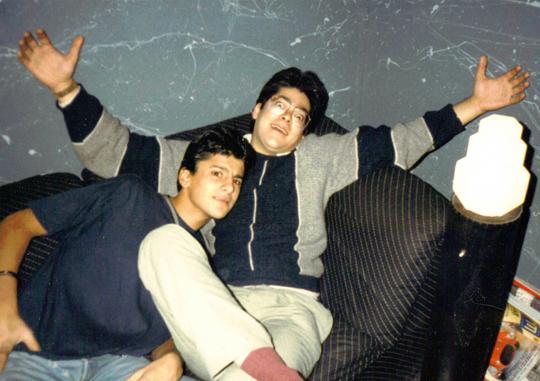
What sort of work did they put you in charge of?
“I was the Sound engineer booked when Jack Trax artists wanted some studio time, when they were over from the US. That’s how I started to really got into the music making side of things. After watching artists like Larry Heard on the keys, or Adonis on the mixer – mixing down a track, it was very inspiring as I’d never seen or heard anything like it before, so it was a complete revelation.”
And what projects did you get to work on?
“Can you feel it” – Robert Owens’ song version (not the Martin Luther King speech one), a fair bit of Adonis material (which didn’t get released), Marshall Jefferson, Shock Sound System (their rapper ended up being in KLF “What Time is Love), P.I.L. sessions. I also got to do some mastering for the V.A. compilations that Jack Trax was known for.”
What sort of studio set up did they have?
“It was a 24 Track Recording Studio, mostly booked for mixing down tracks, so not to many synths or drum machines. They had a lot of outboard gear: EQs, Reverbs, Delays, Compressors. Most of the gear was all hired in from hire companies like “Studio Hire or FX Rental”. You basically could rent out anything. Those Jack Trax sessions were where I saw the 909 and 303 in action for the first time, how they put it all together. I already knew about the 808, because of hip hop, the use of that low sub kick with a long decay, you would hear it on Public Enemy, LL Cool J, etc”
How did it lead you to joining R&S and going over to Belgium in 1988?
“I was introduced to a freelance sound engineer that used to be booked at the ‘Wall Studios’, Julian Standen. He engineered and mixed a few cool bands like Siouxsie and The Banshees. I ended up playing him some of my stuff and he mentioned that some label was always flying him in and out to Belgium to mix down similar stuff. The music was slower in BPM, so I ended up giving him a cassette with some of my tracks. A few months later, I saw him again and he said the Belgians were interested in booking me to work with them and were happy to fly me over. So, flights were booked to Brussels and the next thing I know me and Julian went over to work on some stuff. We went to this amazing studio just outside Brussels, which I found out later it was the same place where Marvin Gaye recorded “Sexual Healing”.
What did you get to do there?
“I was pretty much free to do what I wanted, and this being 1987, there was no Techno as such in Belgium at the time. I was the first artist on Ferrari Records (R&S) to make proper 4/4 music: 120+ bpm House and Techno. I even made some early Electro music under another Alias ‘Space Opera’, a track called Electrowave. Most of the Belgian music was called New Beat which was quite slow and new wave sounding.”
How did the R&S set up compare with that of Jack Trax?
“With Jack Trax, I never saw or imagined my music being on the label. I saw myself as a Sound Engineer and student of the music. But when I went to Belgium, a whole new door opened for me. They said, ‘yeah we like what you do, it’s new and we’ve never heard stuff like it’ and they wanted to put it out.”
Who did you end up working with?
“I initially started working with David Morley who was the 2nd artist who made Techno for R&S. We became good mates early on, worked on a lot of music and ideas together at the R&S ‘summer house’ studio. Dave saw and listened for sure. I also met and worked alongside CJ Bolland very early on, before he even released music, he was just some kid hanging around the studio at the time. Marcos Salon (Outlander), Sven Van Hees, Frank D Wulf all used to pop their heads in to check out the music. Marc Arcardipane from P.C.P. was a real inspiration. Other artists like Joey Beltram, Mundo Musique, Mark Bell, Black Dog were also using the R&S Studio. All in all, I got to work with and meet some great artists. Just to be clear from where I was at, the first Techno in mainland Europe came from Belgium and Frankfurt – these kids were on a mission.”
In 1989 you made a record for Derrick May ‘Fragile 001’, how did this come about?
“Derrick and I first started hanging out when he visited Jack Trax. He used to stay at Neil Rushton’s (Network Records) apartment near Kings Road. One day, I mentioned to him I was going to do some stuff over in Ghent and that I was working with Belgium’s ‘Ferrari Label’ that was into releasing the same kind of Detroit inspired Techno music. With that, I actually brought Derrick over to meet Renaat for the very first time – and before you ask, it wasn’t Renaat who picked up the phone and called Derrick, that’s fake news. R&S did go on to do a very nice deal with him (thanks Cisco!).”
Where was the EP recorded?
“In Belgium, unfortunately there was also a lot of drama behind it. A bunch of tracks I made at the R&S Studio ended up being released on Derrick’s Fragile label. The main track “Why Don’t you answer” was a cover song of a ‘Sting’ track that he’d made with Eberhard Schoener (ex Kraftwerk engineer). The B-side was also a track from David Morley. To be honest, I didn’t really know much about the record until it was released many months later. Maybe Derrick put it out because he liked it and thought fuck it.”
What was it that made you go back to working in London?
“My time with R&S was coming to an end, I started to lose interest and I kept having money issues. I guess I wanted to get out, get back to making House music and have a fresh start.”
How did you meet Colin McBean aka Mr G?
“Through Keith Franklin, a former member of SLF/Bang The Party. We used to do a lot of engineering sessions and Keith was one of the first UK artists to release on Transmat Records with Bang The Party – Release your Body. Back then, Keith used to DJ at a lot of the London spots and he would play with Colin in the backroom at Heaven.”
What made you decide to work together?
“Well, Keith and myself started a project to make underground House. Colin joined us a bit later on, most of the work at that point was done by myself and Keith. Colin would pop into the studio now and then, adding his bit to the track. The three of us ended up being a collective: KCC – Keith. Cisco. Colin.”
When did you realise the harder edged sounds of Techno were your calling?
“After listening to Jeff Mills and Underground Resistance.”
How did the Advent come together as a project?
“It all kind of started when I got my first record deal and needed to come up with a concept and name. I liked what ‘The Advent’ stood for (not in the biblical sense): arrival, appearance, emergence, materialization.”
You then went on to sign a pretty decent deal (12 EPs + 3 albums) in 1994 – how did this come about?
“There was a record shop in central London (I can’t remember the name as there were so many back then!) and Daz Saund (a well known London Techno DJ) worked there. Via the shop, I got approached by Chris Tattersfield who was an A&R man for Polygram/ FFRR/ Internal. I found out he was a huge fan of mine and loved the tracks I did on R&S with CJ Bolland as ‘The 4th Sign’. Anyway, he wanted to offer me a record deal and by this time I’d left K.C.C. As Colin and I always kept in touch and he’d just left K.C.C., I brought him in to work on The Advent with me. Essentially, all the programming, engineering, track mix downs, arrangements were me, Colin wasn’t the technical one. He was really in touch with the record shop scene, great at finding sample material and bringing in fresh music for inspiration – I had no time for that.”
Following the deal, you became established as a “go to” live act in Techno – was this always your vision?
“When I met CJ Bolland back in the late 80s and early 90s, we became good friends and kept in touch with each other. Around 1990, when I decided to go and work for myself, CJ called me and we hooked up. One thing led to another and I went on to play live with him as part of his ‘Rave Signal’ show. During that time, I got to play everywhere for the first time: Mayday Events, Love Parade, clubs in Holland, France, Club UK (London), The Orbit (many times) in Leeds. So, yes – when I started ‘The Advent’, playing live was always my vision. I devised a set up and a way to play. I decided what machines to use and bring. It suffices to say we had many great moments in Japan, Detroit, L.A., Melbourne… we got to go and play in so many places.”
In 1998 you founded Kombination Research, what made you decide to start running your own label?
“When Chris Tattersfield left Polygram/FFRR and went on to A&R at BMG. It basically all went Pete Tong for us at Internal/FFRR! All of a sudden Pete was our A&R Man. Our 3rd album was already finished and ready for release, but as Christian left internal, FFRR shelved the Album release for 13 months. To be honest, Pete was more on the ball with what was going on in the UK & Ibiza. He didn’t really know about the German & Belgian scenes that were blowing up. FFRR was a label back then that mostly licensed tracks because they had the potential to be underground hits. So, I decided to terminate the deal with FFRR/Internal. With that, Kombination Research was born.”
What sort of challenges did you face?
“I was a label owner now so I had to find out about distribution, dealing with record shops, doing promo mail outs and making sure the music was in the right hands. I learned along the way how to do everything really, it was tough but great. It was a great period before the internet and the transition to digital downloads. There were so many good worldwide distributors, record shops all wanting a piece of K.R. There were also so many good labels at the time and every artist had their own sound. No one sounded alike, it was a richly creative time for a lot of us.”
It suffices to say your work rate and output is phenomenal, do you have a particular approach or philosophy that guides you?
“The future is what guides me in my musical vision, what the future will be like. Techno fits this perfectly because it doesn’t sound like the past. Look at it this way: Rock & Roll doesn’t sound like Classical, it sounds completely new. For me, in the 21st century music is made by machines, manipulated by humans.”
Has this changed that much since you started?
“Yes, when it became more about laptop technology and the digital audio kicked in, this became the norm we know today. I think the music and artists got comfortable and safe (me included) in the computer. Music is going through a change again, and new producers are going back to the older/original sound. It’s really great to see people using machines again and going back to basics with the music.”
Name 5 of your favourite pieces of work and tell us why your proud of them:
Tremmer (under my ‘Subjective’ alias)
“A great track I made for Dave Angel’s Rotation Records, it’s one of my favourites. It sounds completely UK and has a unique type groove I spent a lot of time f**king with.”
In Search
“Taken from KR008 ‘Motor EP – when I first played in Detroit at the Motor Club, this idea was in my live show and it blew the roof that night :-)”
Strong hold
“This one came under the name B.C. – a track I made with Robert Leiner aka ‘The Source Experience’, One of Sweden’s first techno producers. It’s a cool combination of electro and techno in one track.”
Space Wreck
“Another Alias ‘Man Made’, this was my 2nd release on Derrick May’s Fragile Label. It has a cool Detroit type mood to it with Soulful keys and a steady Laid back tempo.”
Camargue
“This was my contribution to ‘The 4th Sign’ which me and Cj Bolland made back in the 90-93 period which finally got re-released on Drumcode in September last year. We made a lot of music together back then, most of it didn’t even see the light of day until now – WATCH THS SPACE!”
How did the G Flame and Mr G project start?
“Chris Tattersfield was at BMG and he was still in contact with me and Colin. He wanted to carry on our relationship with the music so we signed a new record deal, with a new concept to merge house with techno. Our original idea was super hero names and we tried out some ideas with the label. The original idea was me as Mr Flame (Human Torch – Fantastic 4) and Colin as Green G (Green Goblin – Spiderman), anyway the record company came back with G Flame & Mr G. We released 6 EPs and an album, great times!”
At what point did you and Colin realise you wanted to tread your own paths?
“It was complicated in the end as it always is but also frustrating from my side, as I was putting in all the studio work. I guess it just felt like our time was coming to an end. I had other ideas I wanted to try out and other artists I wanted to collab with. So, I decided to carry on the Advent solo but helped him set up his label and taught him some tricks on the AKAI MPC2000 to get that G Sound :)”
How did you feel about going solo after having worked as a duo for so long?
“It felt great, I’d just had my 2nd child “Nile” and I decided to move my family to Lisbon – Portugal. We lived there from 2000 for a few years and had a great period escaping London/city life. I really enjoyed being a father in a beautiful country. Music wise, I didn’t do a lot at that time, I kept things more focused on touring and performing.”
Now that you’ve reached 3 decades working in Electronic Music: do you feel you have more to achieve?
“I’d like to think that I’ve played and am still are playing a part in this techno/electronic music movement. With 30+ years and many releases, remixes, spanning all the genres from techno, house to electro. I’d like to think I’m still pushing things: my next achievement involves me and my son ‘Zein’ dropping some pure Electro!”
Looking back, is there much you would have done differently?
“Yes, I definitely would have made a few different moves in my career to avoid conflict with people later on that have no respect for the art, music and only themselves. I would have certainly not wasted time on certain things.”
How do you see the state of play in Techno today?
“It’s almost spilt into 2 sectors: first is the more obvious DJ Top 100 and Ibiza/magazine mainstream, where success is driven by social media and likes. Then there’s the second: the pure original techno sound which is based on talent and hard work, where the artists aren’t all making the same style of music and wanting all to be on the #1 Label. It should be about the difference in music and being true to the sound. People are becoming musically aware again and digging back into the past to seek out quality, as it has been lost in the current mainstream.”
Which new artists excite you?
“Temudo, VIL, Renne Foster, Charles Green, Assembler Code, Stingray, Zein and Torai (my nephew from Manchester who is doing some sick stuff!)…. ”
What advice would you give to youngsters wanting to get into music production?
“It’s a long struggle, prepare yourself…”
Last but not least, what plans do you have for 2020?
“I’ve got an Advent ‘Electro’ album in the works and the very first G Flame Album coming. Over the last year or so, I’ve mostly been playing tracks from the 90s and a purer style of music in my live and DJ sets, I’m really looking forward to fully reviving this music in 2020.”

